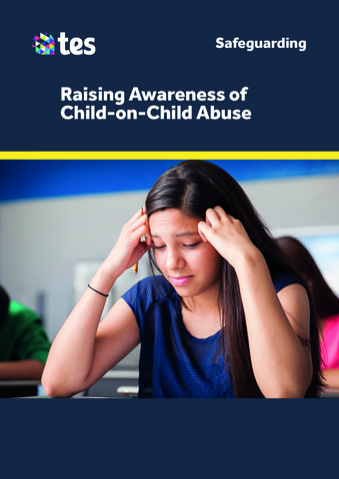
Effective reporting of child-on-child sexual violence and harassment
Victims of sexual violence and harassment are likely to be stressed and upset. They may have been affected physically and verbally both face-to-face and online by an individual or by a group. Any allegation should be taken seriously, and the victim should be offered appropriate support. Each report should be acted upon a case-by-case basis.
Seven key rules of effective reporting
When dealing with reports of sexual violence and sexual harassment you should:
One
Act quickly and sensitively.
Two
Reassure the young person.
Three
Do not promise confidentiality.
Reassurance should be given to the victim that information will only be shared with those that will provide help and support. If a report has been made and as a result, there is a criminal investigation, the school or college should be aware that they must do all they can to protect the child’s anonymity. Depending on the nature of the incident, it will have to be decided which staff should be aware and what support should be in place. Any support should be for both the victim and the alleged perpetrator. Rumours either in the school or college environment or via social networking should be monitored and dealt with.
You should refrain from using the name of the alleged perpetrator to the parents of the victim and likewise when meeting with the parents of the accused.
Four
Only ask open questions to obtain clarity.
Five
Make a written record, recording the facts, not your personal opinion. When making notes you should not become distracted from what the young person is telling you, so you may consider writing up the report immediately after the disclosure. You should be aware that your report may become part of a criminal investigation.
The following points should be considered:
- The age of the child or young person involved.
- Any power imbalance between the children.
- The nature of the alleged incident.
- The developmental stages of the children.
- Is the victim or are any other children at risk?
- Has an allegation been made before?
Six
Explain what the next steps are to the victim and who the report will be passed on to.
Seven
Follow the child protection policy for your organisation.
Your school should have clear policies and procedures in place to help in reporting and acting on allegations of sexual harassment and sexual violence. These policies should include:
- behaviour policy
- child protection policy
- equality and diversity policy
- anti-bullying policy
- your school may also want to develop a peer-on-peer abuse policy.
Support and signposting
When dealing with cases of sexual violence and sexual harassment schools should feel confident in contacting their local police and the local authority social care department for advice and support.
Extra advice and support can also be obtained from the following organisations.
NSPCCHelpline for professionals 0808 800 5000 or email help@nspcc.org.uk
Rape Crisis
Help and support – 0808 802 9999
The Survivors Trust
Offers support for sexual violence and abuse
Support, advice and information – 0808 801 0818
The UK Safer Internet Centre
Helpline for professionals regarding online safety 0344 381 4772 or email helpline@saferinternet.org.uk
UKCCIS Sexting Advice
The UK Council for Child Internet Safety is a group of organisations working help keep children safe online
The Anti-Bullying Alliance
Provide support to professionals
Anti-Bullying Alliance Website
New Training Course
The above information was taken from EduCare’s new training course Sexual Violence and Harassment between Children and Young People.
The course is available to buy online or is included in our comprehensive safeguarding and duty of care e-learning service, EduCare for Education®.
Get in touch to find out more
Raising Awareness of Child-on-Child Abuse
Child-on-Child abuse is any form of physical, sexual, emotional, financial, and/or coercive control exercised between children and young people; this includes intimate and non-intimate relationships.
Read moreRaising Awareness of Child-on-Child Abuse
The purpose of this course is to help you:
- understand what peer-on-peer abuse is
- understand the different types of child-on-child abuse
- understand who child-on-child abuse may affect and what external influences there are
- be aware of the prevalence of child-on-child abuse
- understand social norms and peer pressure
- recognise early signs that might indicate abuse
- know what action to take if you know or suspect that a young person is experiencing abuse
- implement preventative strategies within school or college.
KCSIE 2018: 5 recommendations for training topics for inset days
Plan your inset days to ensure staff are trained and will be compliant with KCSIE 2018
Read more

